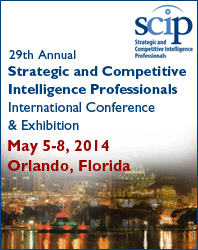 |
||||
|
||||
|
INDUSTRY INSIGHT You Can’t Beat Biases With Big Numbers
The rough New England weather always ensured that Boston had plenty of potholes, but finding and cataloging them was time consuming and inefficient. The City’s solution, StreetBump, an accelerometer powered app for iPhone, was a clever mix of crowdsourcing and big data. Users could simply turn on the app while driving and every time the driver hit a hole, the phone would record the location for city planners to use. While this solution was widely hailed as innovative, it was also biased. The city didn’t just have a pothole problem - it also had a smartphone problem. iPhones were generally limited to younger, wealthier citizens, leaving much of the city underrepresented in the data. While Boston recognized the problem and used sophisticated statistical methods to adjust the data, the fact that the data was biased was clear. This is precisely the point Kate Crawford, a principal researcher from Microsoft Research, made when analyzing the Twitter response to hurricane Sandy in New York. “Data are assumed to accurately reflect the social world,” Crawford writes, “but there are significant gaps, with little or no signal coming from particular communities.” The danger of misinterpretation of big data due to biases is, according to Crawford, “misallocating important public resources.” Imagine, she elaborates, if FEMA had used the Twitter data to allocate disaster relief. Biases of all kinds have long been a problem in intelligence analysis. Dating back at least to Richards Heuer’s seminal work, The Psychology Of Intelligence Analysis, intelligence professionals have been wrestling with these mental shortcuts that cause predictable errors in human judgment. Recently, the U.S.’s Intelligence Advanced Research Projects Activity (IARPA) launched the SIRIUS program. Designed to develop games to train intelligence analysts to recognize and mitigate cognitive biases, SIRIUS focuses on the six biases IARPA identified to be most relevant for the modern day intelligence analyst and those that, consequently, are most likely to influence analysis and decisionmaking. These “big six” cognitive biases include confirmation bias, representativeness bias (more colloquially known as stereotyping), anchoring bias, projection bias (appearing under the alias “mirror-imaging” within the intelligence community), fundamental attribution error (FAE) and bias blind spot. These biases, in addition to influencing the products and processes of people, also have the potential to influence big data. Specifically, cognitive biases can impact either the collection strategies used to gather the data or the interpretation of the results after the data has been collected and processed. Examining the “big six” in terms of their potential impact on big data yields some interesting results: Confirmation Bias: This is the tendency to weigh evidence that confirms our pre-existing notions more heavily than evidence that challenges our current way of thinking. This bias could easily crop up in the way analysts format their data queries. It can also manifest itself in the weight the results are given in the decisionmaking process. Anchoring Bias: Anchoring is the tendency to hyperfocus or “anchor” on a specific piece of information such as a number. This becomes apparent primarily in the interpretation of big data sets where the plethora of hard numbers generated can cause analysts and decisionmakers to overlook softer, but equally important, data. Representativeness Bias: Representativeness bias is more colloquially known as stereotyping and is the tendency to ignore the base rate when judging probabilities within data sets. This bias could appear in the definitions of keywords and other terms used to probe big data sets. The numbers associated with stereotypical terms have the potential to give these definitions inappropriate meanings. Projection Bias: Projection bias is more commonly thought of within the intelligence community as “mirror-imaging” or thinking that your competitor thinks the way you do. The Boston pothole app is an ideal example of this sort of mirror-imaging in that analysts presumed that smartphone owners were adequately represented within all socioeconomic sectors. Fundamental Attribution Error (FAE): The fundamental attribution error is when people put too much emphasis on the personality of the actor as opposed to the role the situation plays in decisionmaking. Big data allows analysts to drill down deeply into individual actions. FAE suggests that a more holistic approach, which focuses on the situation, is often more appropriate. Bias Blind Spot: Bias blind spot is, at its core, the ability to see biases in others but not in ourselves. This bias would allow analysts, for example, to readily see the errors in someone else's big data collection and interpretation activities while missing it entirely in their own research. Ultimately, big data is the statistical, computational and business-related buzzword of the moment. And rightfully so; the exploitation of so-called metadata and big data are providing companies with insight into internal business processes and consumer marketing that takes trend analysis to an entirely new level. What is important to realize, however, is that no great innovation comes without caveats - that big data, just because it’s big, does not mean it is immune to bias. Biographies: Kristan J. Wheaton and Melonie K. Richey have spent the last several years at Mercyhurst University researching the effects of biases on intelligence analysis. Recently they have conducted workshops at the Global Intelligence Forum and at the National Defense University on ways to teach analysts to identify and mitigate the effects of these biases. |
|
||||||||||||||||||||||||||||||||||||||||||||||||||||||||||||||||||||||||||||||||||||||||||||||||||||||||||||||||||||||||||||||||||||||||








